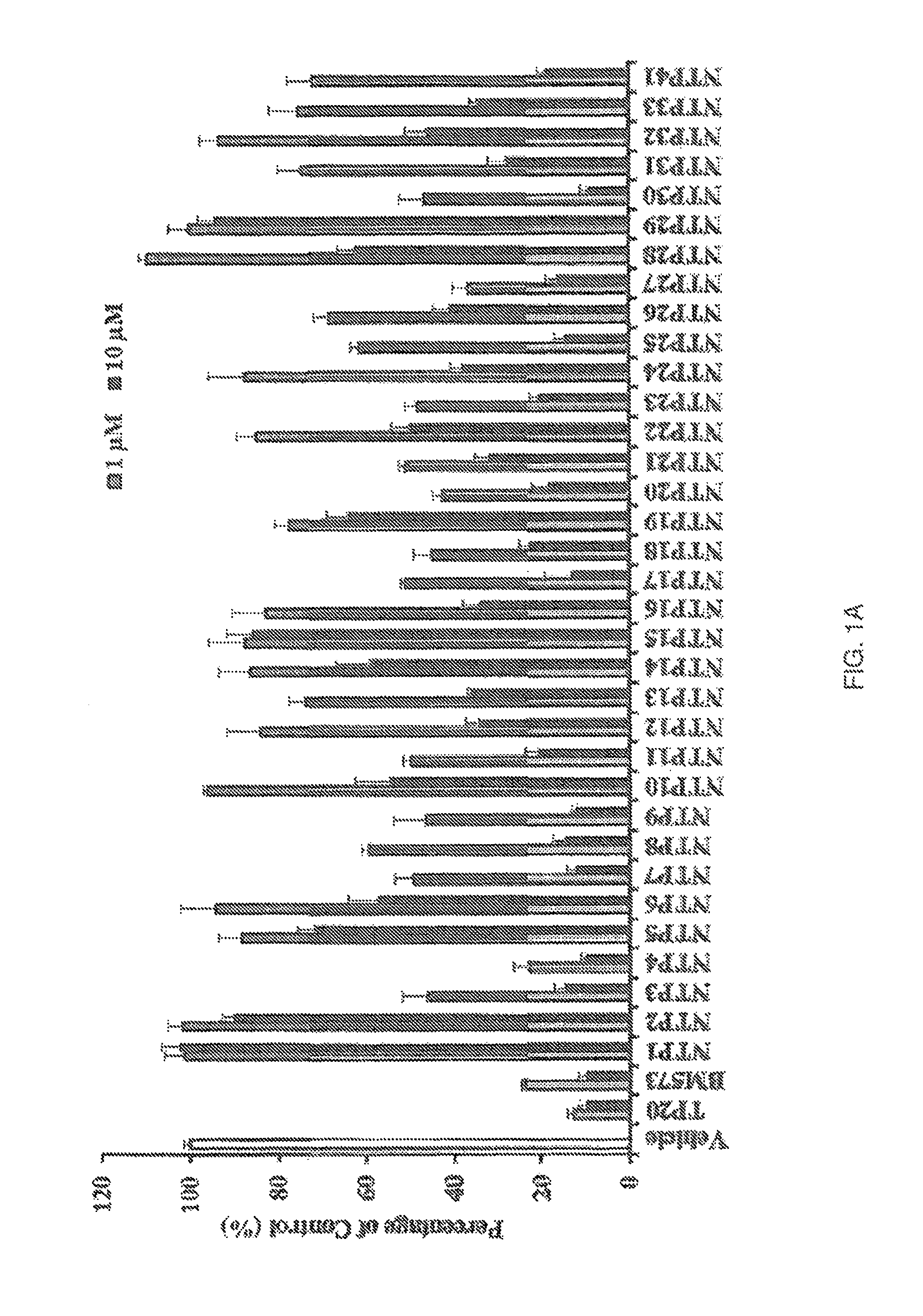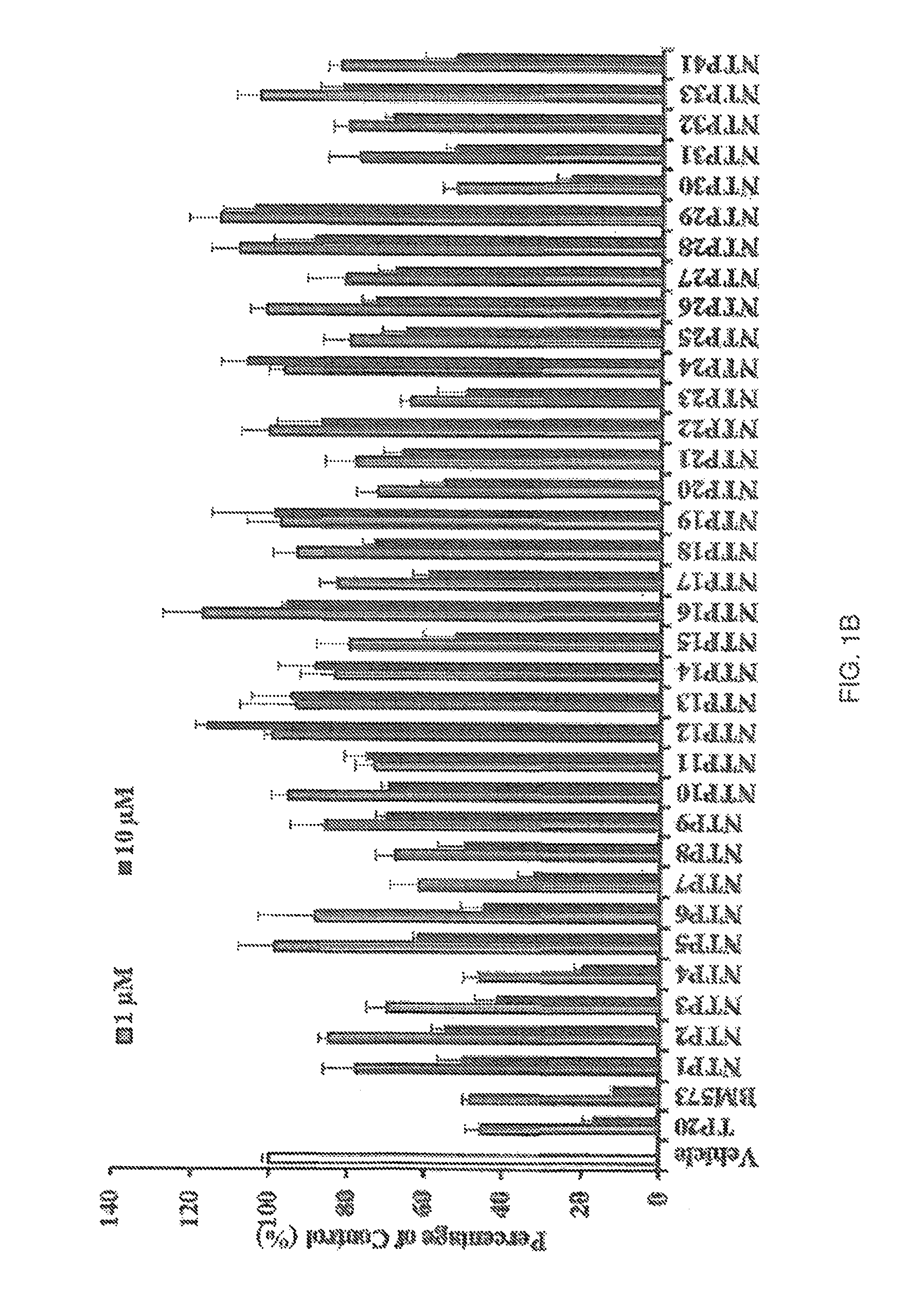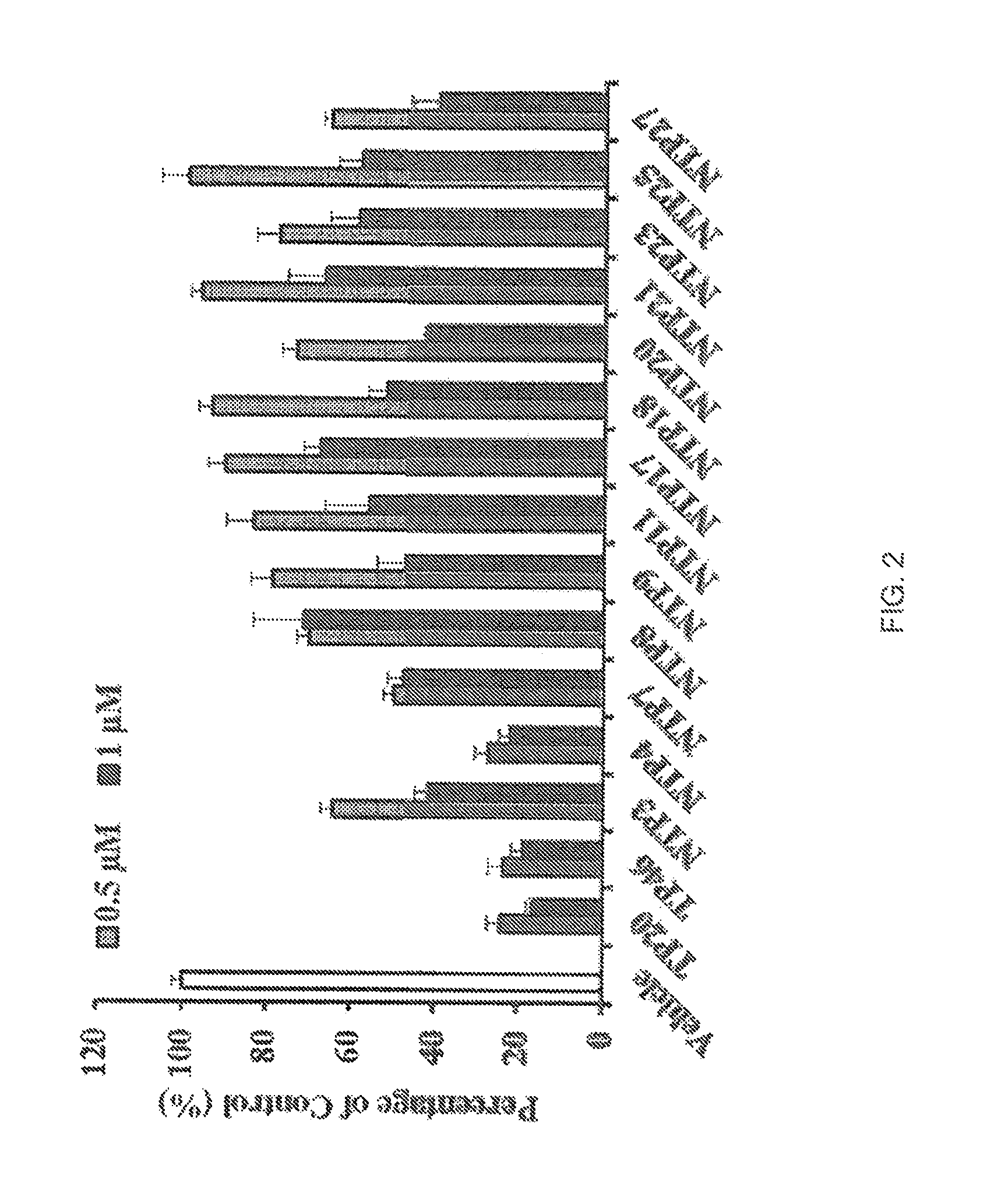Thromboxane receptor antagonists
a thromboxane receptor and antagonist technology, applied in the field of compounds, can solve the problems of tissue damage, affecting the function of organs, reducing oxygen supply, etc., and achieve the effects of reducing the risk of clinically significant thrombosis or embolism, stimulating platelet activation and aggregation, and inhibiting thrombosis and other events
- Summary
- Abstract
- Description
- Claims
- Application Information
AI Technical Summary
Benefits of technology
Problems solved by technology
Method used
Image
Examples
example 1
Calcium Mobilization
[0229]The appropriate functional test for the evaluation of the agonistic and / or antagonistic potency of the compounds of the invention is the determination of calcium flux. Both TPα and TPβ are coupled to the G-protein Gαq. Therefore, stimulation of these receptors ultimately leads to a release of intracellular calcium ([Ca2+]i) from intracellular stores. Consequently, the determination of [Ca2+]i flux represents an appropriate functional test for the evaluation of the agonistic / antagonistic potency of compounds of the invention. Calcium can be measured using a molecule characterized by the covalent combination of a Ca2+ chelating group and a fluorophore group. The Ca2+ binding properties of these indicators are formed by the presence of a tetracarboxylic, acid core as found for example in EGTA (ethylene glycol bis(2-aminoethyl)tetraacetic acid). Binding of Ca2+ produces a wavelength shift in either the excitation or emission fluorescence spectra or a change in ...
example 2
The effects of selected compounds of the invention on agonist-(U46619)-induced platelet aggregation ex vivo was examined.
[0239]A modification of the turbidimetric method originally developed by Born & Cross (Born, G. V. and Cross, M. J., The Aggregation of Blood Platelets, J Physiol, 1963, 168:178-95) is used. The principle is based on the diffraction of the light by particles. When a light beam passes through a suspension of particles, it is diffracted, depending on the number and the size of the particles in suspension.
[0240]In the Born & Cross method, a light beam passes through a platelet suspension and the quantity of light is measured by a detector placed after the sample. Upon platelet aggregation, the size of platelet aggregates will increase while the total number of free platelets will decrease. Consequently, less light will be diffracted and the detector will record an increase in light intensity. The aggregometer has been developed based on th...
example 3
Screening of Compounds
[0248]The effects of selected compounds of the invention on agonist-(U46619)-induced platelet aggregation ex vivo was examined.
[0249]Compounds listed in Table 2.4 were initially screened through calcium mobilisation assays using HEK 293 cells over-expressing the thromboxane (TX)A2 receptor, β isoform (TPβ), referred to as HEK.TPβ cells and thereafter, activity was confirmed in HEK.TPα cells over-expressing the a isoform (TPα). The screening involved examining the effect of the compounds, used at land 10 μM concentrations, on calcium mobilised in response to the TXA2 mimetic U46619 (1 μM). The data was compared to compound Formula (X) (i.e., TP20) and the reference TP antagonist BM573 (1) where the results are shown in FIGS. 1A-1B and Table 2.5 (n≧3). Table 2.4 gives the names used in the study for the compounds by formula reference.
[0250]
TABLE 2.4Names in studyFormulaNameXXITP1XIVTP2XVTP3XVITP4XVIITP5XXIVTP6XVIIITP7XIXTP8XXVITP9IIITP10VIIITP11XXXTP12XXXIITP13XX...
PUM
| Property | Measurement | Unit |
|---|---|---|
| pH | aaaaa | aaaaa |
| temperature | aaaaa | aaaaa |
| time | aaaaa | aaaaa |
Abstract
Description
Claims
Application Information
 Login to View More
Login to View More - R&D
- Intellectual Property
- Life Sciences
- Materials
- Tech Scout
- Unparalleled Data Quality
- Higher Quality Content
- 60% Fewer Hallucinations
Browse by: Latest US Patents, China's latest patents, Technical Efficacy Thesaurus, Application Domain, Technology Topic, Popular Technical Reports.
© 2025 PatSnap. All rights reserved.Legal|Privacy policy|Modern Slavery Act Transparency Statement|Sitemap|About US| Contact US: help@patsnap.com



